Balsam pear
Momordica charantia, Fam. Cucurbitaceae
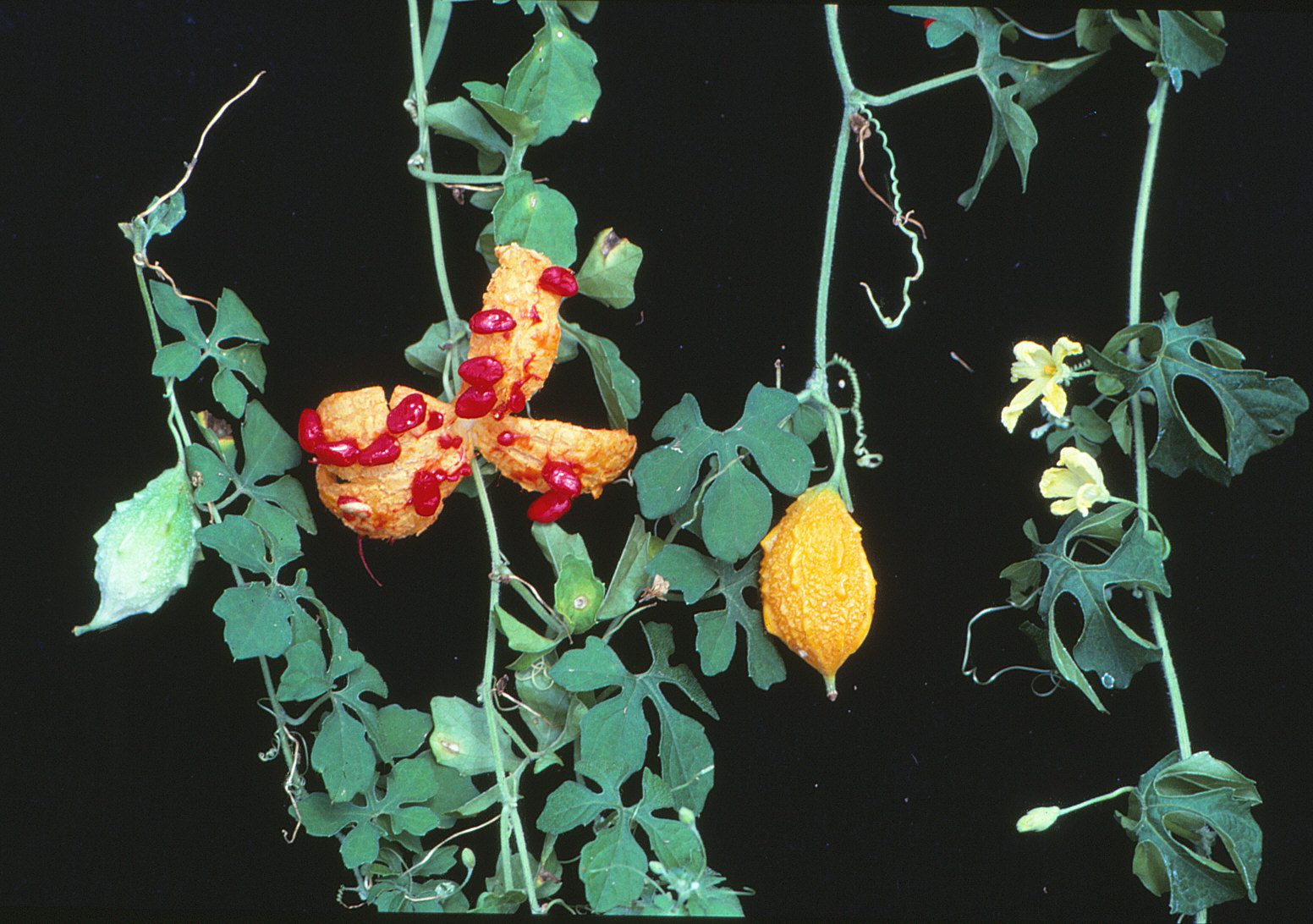
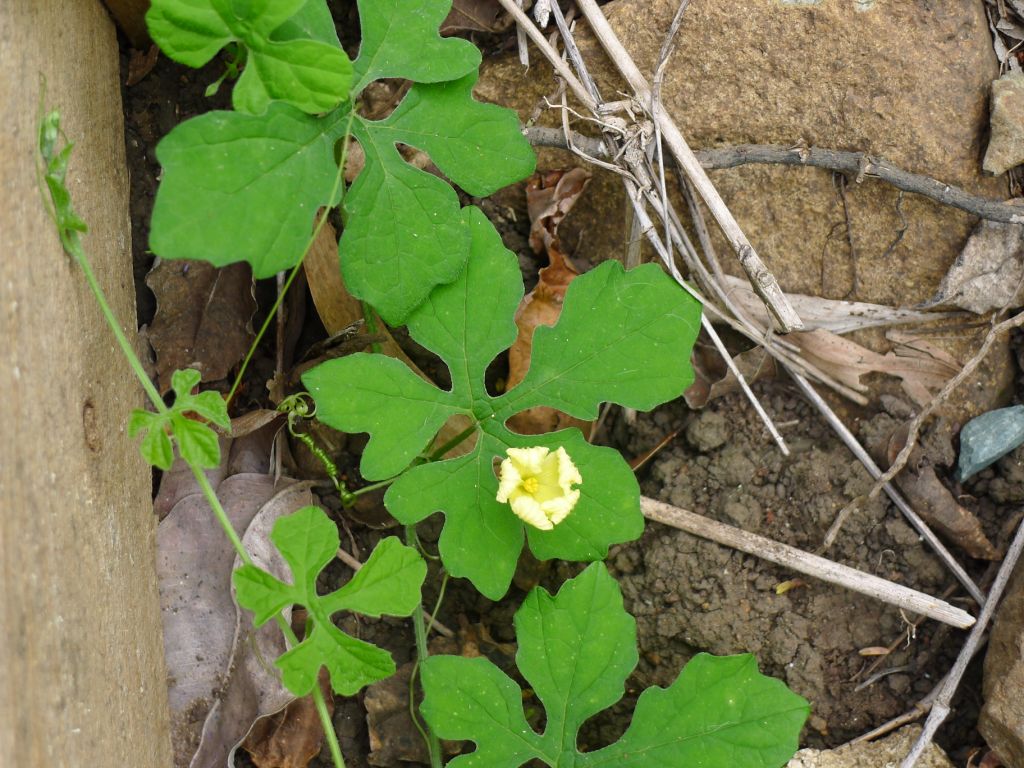
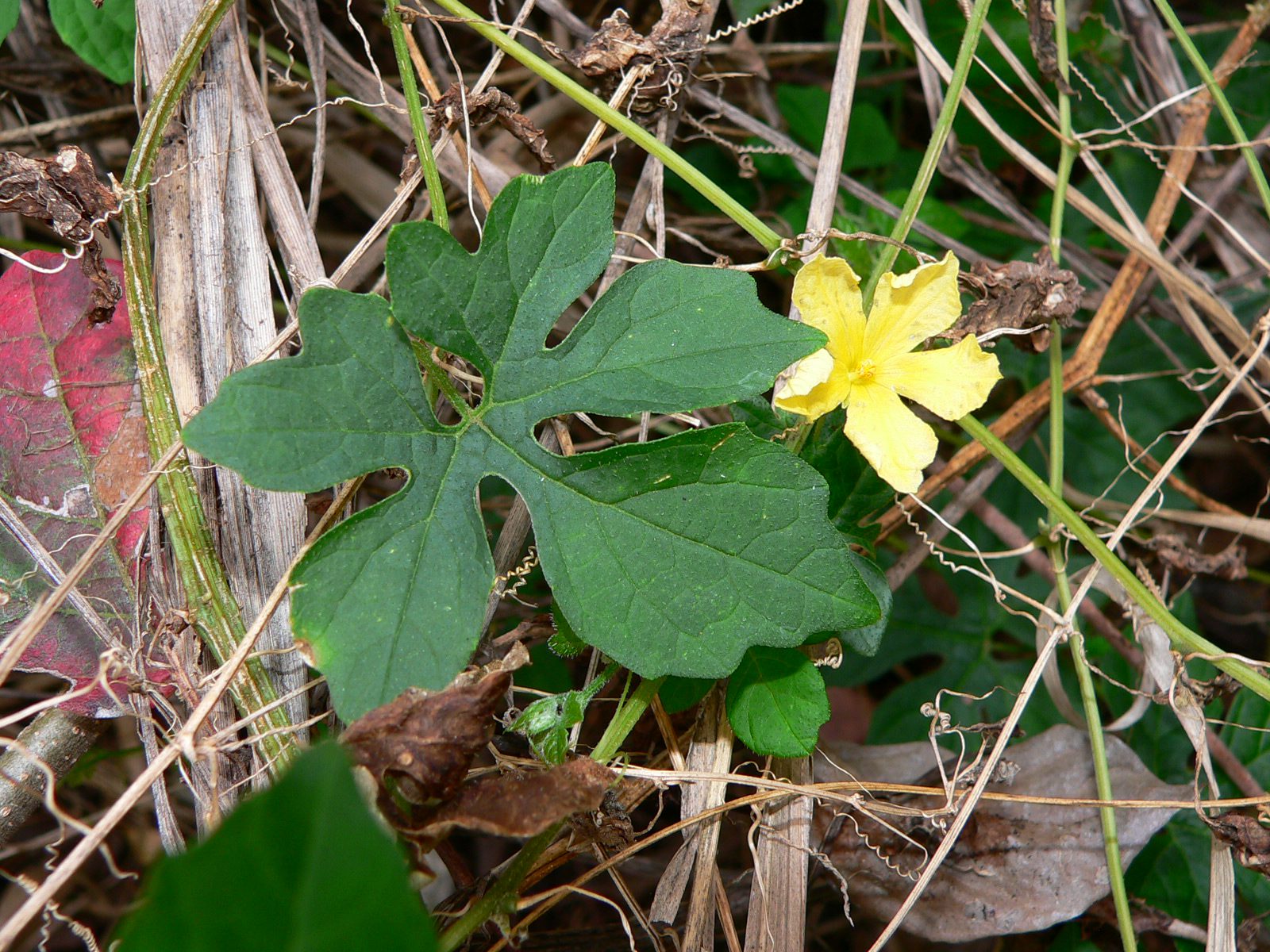

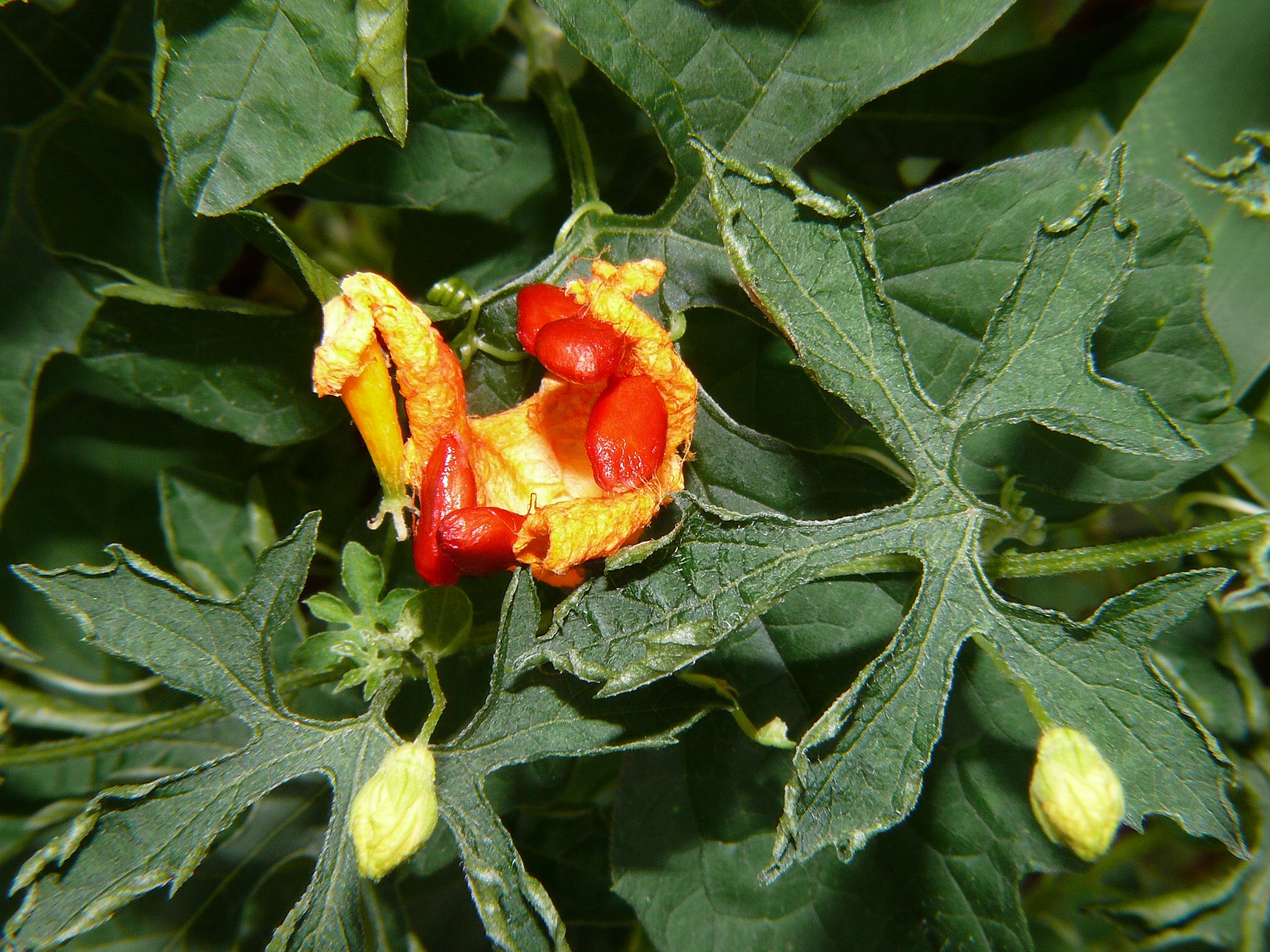
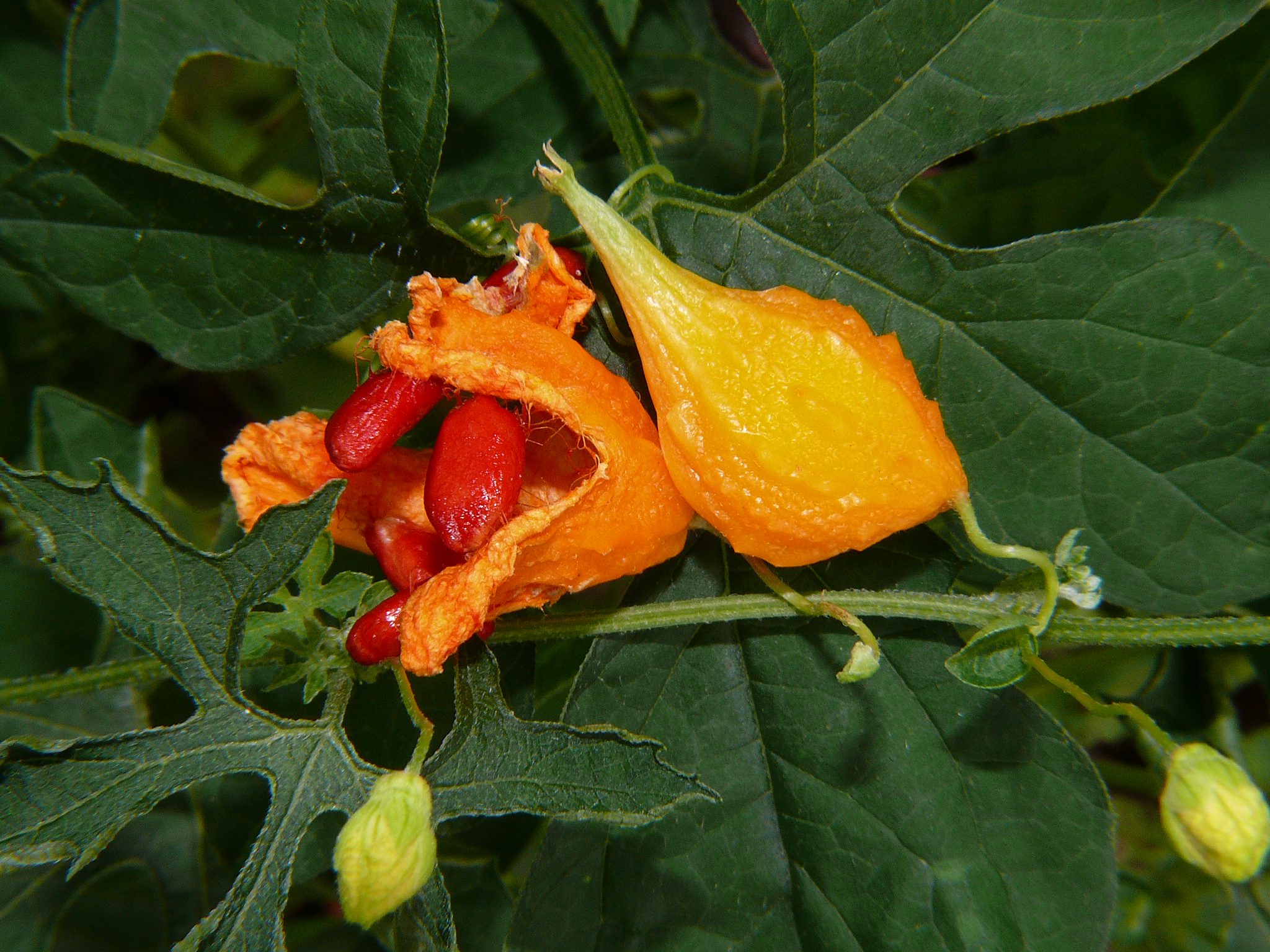






An annual slender stemmed vine, twining or climbing by coiled tendrils. All parts produce a strong, unpleasant smell.
| Weed Category: |
Other invasive plants Invasive plants that are not prohibited or restricted invasive plants, but are known to spread readily and cause negative impacts, within the region.
|
| Weed: | Yes |
| Form or habit: | Vine (Climbing, Twining or groundcover) |
| Family: | Cucurbitaceae |
| Leaf: | Simple Alternate Alternate orbicular in outline, to 150mm across, deeply palmately divided into 5-7- pointed lobes with scalloped margins, mid-green and soft textured; stalk 30-50mm long. |
| Flower conspicuous: | Conspicuous |
| Flower colour: |
Yellow |
| Flower description: | Yellow with 5 petals, about 20mm wide, solitary male or female flowers borne on stems to 50mm long in the leaf axils. |
| Fruit conspicuous: | Conspicuous |
| Fruit colour: |
Orange, Red |
| Fruit: | Fleshy |
| Fruit description: | Fleshy reddish orange pendulous capsules, 30-120 x 20-30mm, tapered at both ends, ridged and warty; bursting open on maturity. Seeds are small, black and surrounded by a scarlet-red fleshy aril. |
| Habitat: | |
| Distribution | |
| Food source for: | |
| Toxicity: | No toxicity known |
| Origin: | Pantropic |
| Notes: | Spread by: animals, birds and humans. Invades/threats: sugarcane crops, rainforest margins, creek bank and coastal communities, unmanaged land, roadsides and gardens. Notes: introduced to Australia and now widely naturalised. Used in Asian cooking for its bitter taste; has many medicinal uses. The red flesh is reported to be edible but seeds shouldn’t be eaten. Environmental weed. |
| Information sources: | Mackay Regional Pest Management Group (2018) Weeds of the Mackay Whitsunday Region Second Edition. |